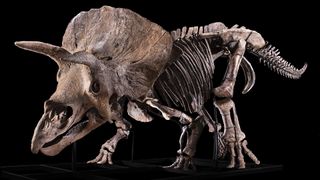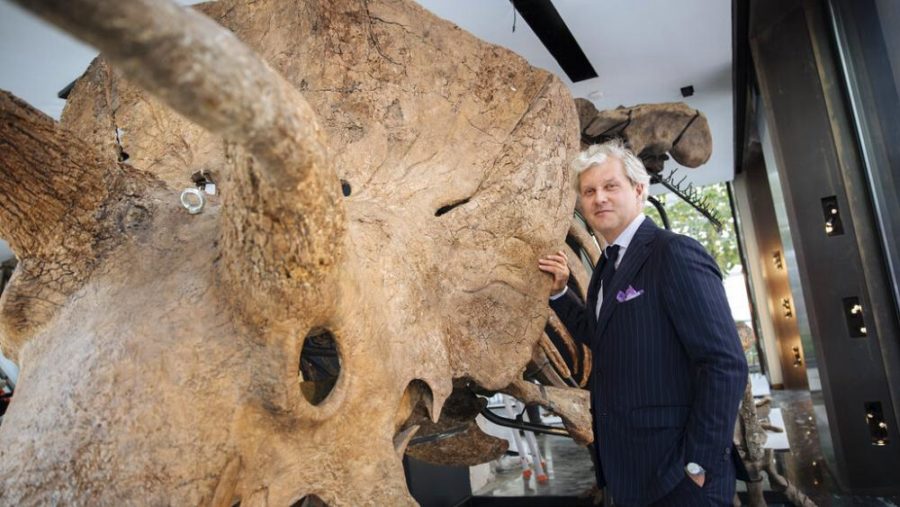The massive fossil will be on display in Paris from Sept. 16 to Oct. 15.
“An enormous triceratops nicknamed “Big John” is expected to fetch big bucks on the auction block in France, in October.”
The following written content by Mindy Weisberger a

An enormous triceratops nicknamed “Big John” is expected to fetch big bucks on the auction block in France, in October.
The skeleton, which is more than 66 million years old and is approximately 60% complete, is the largest triceratops ever found. It measures about 26 feet (8 meters) long; the skull, which is 75% complete, is 6.6 feet (2 m) wide.
French auction house Giquello will display the massive fossil to the public from Sept. 16 to Oct. 15 at 13 Rue des Archives in Paris, Giquello representatives said in a statement. Then, on Oct. 18, the giant dinosaur fossil will make its debut appearance at the Parisian auction house Hôtel Drouot, where it will be auctioned on Oct. 21 to the highest bidder as part of Giquello’s “Naturalia” auction. Big John is expected to fetch between $1.4 million and $1.8 million (1.2 million and 1.5 million euros), according to the statement.
Frilled, tri-horned triceratops inhabited North America about 67 million to 65 million years ago during the Cretaceous period (145.5 million to about 65.5 million years ago). Big John lived in what is now South Dakota on an island continent called Laramidia, which formed during the latter part of the Cretaceous when a shallow sea flooded North America’s central region.
The fossil was discovered in 2014 by paleontologist Walter W. Stein, owner of the independent commercial paleontology company PaleoAdventures in South Dakota. Stein excavated the skeleton from the Hell Creek Formation, an ancient flood plain and a rich fossil site that spans parts of Montana, North Dakota, South Dakota and Wyoming. Much of the formation is on state and federal lands, according to the University of California Museum of Paleontology at Berkeley.
Millions of years ago, Big John died and was covered by thick mud, which enabled the bones to fossilize. A preserved notch in his collarbone suggests that the triceratops was wounded during violent combat, possibly during a tussle with another triceratops over mates or territory, according to the statement. Read more from Live Science.





